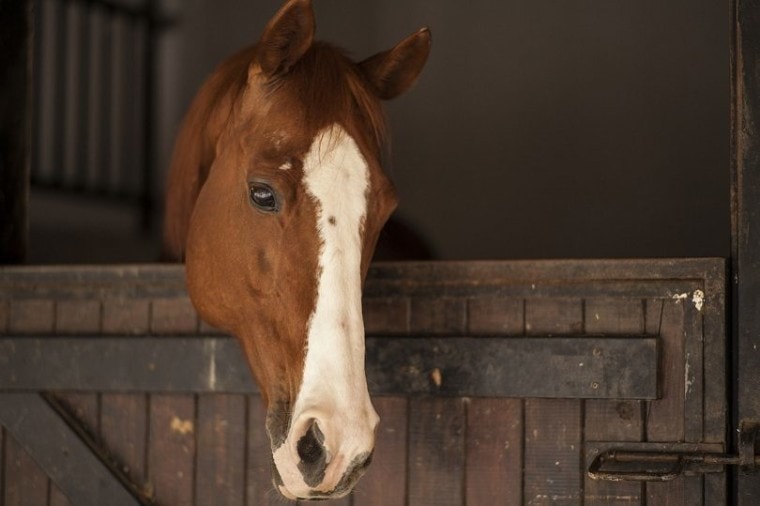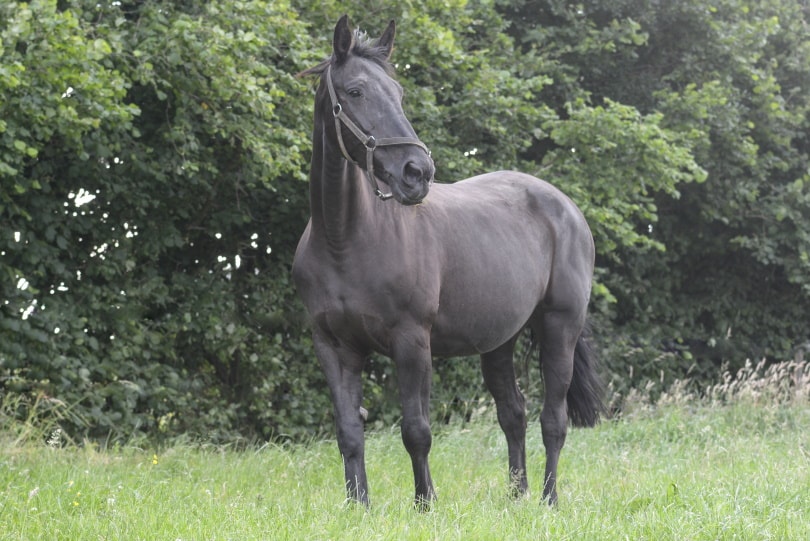
Most people understand enough about how their body functions to know when the signs are telling them that something is wrong. For instance, a high temperature can indicate a fever. As a horse owner, it’s important that you understand the same signs when it comes to your horse’s health.
Horses can’t communicate with words, so it’s up to you to know when there’s a problem requiring your attention. To help, this article will discuss your horse’s body temperature, as well as several other vital signs that can give you an insight into your horse’s health and current condition.
What’s the Average Body Temperature of a Horse
Your horse’s body temperature can tell you a lot about how they’re doing. It can be an indication of poor health, alerting you to the need for taking action. While body temperatures will fluctuate some, on average, your horse’s temperature should be between 99-101 degrees Fahrenheit. If your horse’s temperature reaches 102 degrees, it’s time to consult a veterinarian.

Is a Horse’s Body Temperature Always Consistent?
Even for a healthy horse, body temperature can shift up to three degrees. Several environmental factors can cause changes in your horse’s body temperature, such as exercise, stress, excitement, and warm weather. If you know that your horse was just working hard, you should expect its temperature to be a bit high. Still, it’s best to be cautious and retest shortly after. If you see a persistent temperature of 102 or higher, you should call the vet.
What’s the Best Way to Take a Horse’s Temperature?
When it comes to horses, the most accurate way to measure their temperature is with a rectum thermometer. You can get them at pharmacies, or ideally, a tack shop. You’ll want to tie a long string on the end of the thermometer to ensure that it doesn’t get lost inside your horse. It might sound crazy, but that’s a very real possibility that you won’t have fun dealing with. Plastic thermometers are the best choices, and digital options are usually the fastest and easiest to use.
How to Take a Horse’s Temperature
Before attempting to take your horse’s temperature, either tie them up or have someone hold onto them. Also, be aware that some horses won’t enjoy this process. If you don’t want to get kicked, you might want to stand to the side of the horse, rather than directly behind.
Start by lubricating the thermometer. You can use Vaseline or petroleum jelly. Then, move the tail out of the way to the side of the horse. Gently slide the thermometer into the rectum, slightly angling it down towards the ground.
Leave the thermometer in place until the reading is reading. For many thermometers, this could take several minutes, though digital thermometers tend to offer quicker readings in less than one minute.
After taking your horse’s temperature, be sure to clean and sterilize the thermometer before you put it away. This is particularly important if the horse is sick. You don’t want to spread bacteria and illness through your horse thermometer.
Other Important Horse Vital Signs
While temperature can offer you a clear indication of your horse’s immediate health, it’s far from the only sign you should be looking for. Many other vital signs can offer you further glimpses into your horse’s condition, allowing you to cut illnesses and health concerns off early by catching them before they truly take hold.

Heartrate
Just as the pulse is a major indicator of health in humans, the same is true for horses. A heart rate that’s too high can mean the horse is physically distressed, excited, nervous, or in pain. Exercise and heat can also cause an elevated heart rate. Furthermore, some diseases can affect your horse’s heart rate, presenting a clear indication of a problem that requires further addressing.
For an adult horse, heartrate should average between 30-40 beats per minute. A pulse over 50 beats per minute can mean that your horse has a problem.
Younger horses have naturally higher heartrates. Foals have the largest range with heartrates spanning from 70-120 beats per minute. Yearlings have heartrates of 45-60 beats per minute on average. Horses that are two years old are getting close to an adult heart rate, with an average of 40-50 beats per minute.
Breathing Rate
The number of breaths your horse takes each minute can be another sign of their health. For adult horses, the average rate of respiration is 8-15 breaths per minute. Younger horses will take more breaths than adults.
Naturally, hot weather and exercise can cause a horse’s respiration rate to rise. But a high breathing rate can also mean other issues are present. If your horse is breathing rapidly, you should contact your veterinarian immediately.
The best way to check your horse’s breathing rate is to use a stethoscope against their windpipe. Shy of that, you can count breaths by watching or feeling your horse’s ribcage expanding with each breath. If this isn’t working, put your hand in front of its nostrils to feel the exhales. Make sure you count each inhale and exhale together as a single breath.

Gut Noises
Your horse’s stomach and intestines are constantly making noise. In fact, if they’re quiet, it usually means a higher chance of a health problem than when the gut is making excessive noise. If you don’t hear any sounds coming from your horse’s stomach, you should call your veterinarian immediately; it might be a sign of colic.
It’s easy to listen to your horse’s gut. You can simply press your ear against your horse’s body, right behind its last rib. You’re listening for gurgling and bubbling sounds to indicate that your horse is healthy. Be sure to check both sides.
If you don’t hear any sounds at first when listening for gut noises, then you might want to try enlisting the help of a stethoscope. Should you still hear silence through the stethoscope, it’s time to get your vet’s opinion.
Hydration
Horses drink an incredible amount of water, which makes it easy for them to become dehydrated rather quickly. An adult horse will drink between 5 and 12 gallons of water each day, depending on its activity level. If your horse doesn’t seem to be drinking water, you can try mixing in something flavorful such as Gatorade or apple juice. Should the problem persist, you’ll need to contact your veterinarian.
There are several ways to see if your horse is dehydrated. First, you can try the pinch test. Simply pinch the skin on your horse’s neck and hold it for a few seconds. If your horse is hydrated, the skin will snap back instantly when you let go. The skin of a dehydrated horse will form a wrinkle or fold that will take about five seconds to disappear.

Conclusion
Adult horses have an average body temperature of 99-101 degrees Fahrenheit. Anything higher than this warrants a call to the vet. But temperature isn’t the only indicator of your horse’s health. Be sure to check their heart rate and breathing rate. Also, listen for gut noises and ensure that your horse is fully hydrated. If all of these check out, then your horse is most likely healthy.
Related Reads:
- Horse Sheath Cleaning
- Rain Rot in Horses 101: Treatment and Prevention
- PSSM in Horses: What It Is, Symptoms & Treatment
Featured Image Credit: Engin_Akyurt, Pixabay









